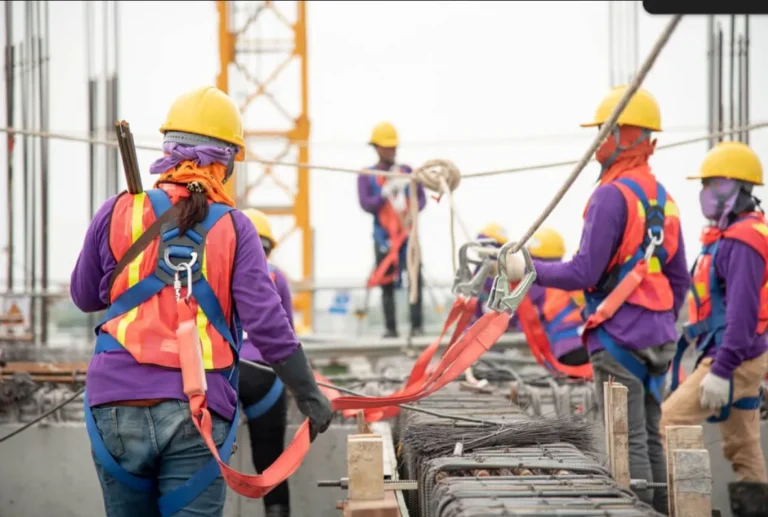Key Takeaways
- Understand what constitutes a personal injury claim in construction site accidents.
- Learn the potential outcomes of filing a personal injury claim for construction workers.
- Discover the types of compensation workers may be entitled to.
- Recognize the importance of legal advice for navigating personal injury claims.
Understanding Construction Site Accidents
Construction sites are often seen as the backbone of urban development, where constant activity symbolizes progress and innovation. However, they are also fraught with hazards inherent to the work, including heavy machinery, elevated workspaces, and hazardous materials. Accidents can and do occur despite rigorous adherence to safety protocols, underscoring the importance of understanding personal injury claims in these settings. For instance, Thomas Law Offices stands as a beacon for workers seeking justice and compensation in light of these incidents, providing seasoned expertise to navigate the complexities of such claims.
These claims aren’t just about seeking monetary compensation but addressing workplace safety limitations and mitigating further hazardous conditions. For construction workers who suffer from injuries due to unforeseen events, understanding the benefits and processes of pursuing personal injury claims is vital—not only for personal recuperation but also for advocating industry-wide improvements in safety standards.
Components of a Valid Personal Injury Claim
Filing a valid personal injury claim requires meeting specific legal components that establish the foundation for the case. The first step is demonstrating that an individual or entity owes the worker a duty of care. Next, it needs to be shown that this duty was breached, meaning that the responsible party failed to uphold the expected standard of care. Importantly, there must be a direct causative link between this breach and the injury suffered, culminating in tangible damages such as medical expenses or lost wages.
The success of these claims often hinges on thorough documentation and the ability to gather compelling evidence. This includes medical records, safety reports, eyewitness accounts, and expert testimonies. Leveraging resources such as the Occupational Safety and Health Administration can offer expansive data and insights into standard safety practices and how deviations from these standards may lead to accidents. Injured workers can better position themselves for favorable outcomes by taking these steps.
What Can Workers Expect from Personal Injury Claims?
The road to a successful personal injury claim can be uncertain, but it is a worthwhile avenue for achieving needed compensation and enforcing accountability. Typically, most claims are settled outside of court, providing a direct and often faster solution for injured workers. However, the particulars of each case vary, and some may proceed to trial if a fair settlement isn’t reached.
Potential compensation covers a range of damages that reflect the multifaceted impact of the injury. Financial restitution may encompass immediate and long-term medical expenses, accounting for treatments, rehabilitation, and potential future medical needs. Loss of earnings, both past income loss and anticipated future earnings, form another critical component. Lastly, personal injury claims may address non-economic damages, providing redress for pain, suffering, and emotional distress, as well as a lack of morale and productivity due to the accident.
Compensation Types for Construction-Related Injuries
- Medical Expenses: This encompasses the immediate costs of emergency medical treatment and ongoing expenses such as physical therapy, medication, and necessary future medical interventions. It ensures that victims aren’t left out-of-pocket while recuperating from work-related injuries.
- Loss of Earnings: Injuries on construction sites can often render workers incapable of performing their temporary or permanent duties. Compensation in this category provides financial relief for the wages lost during recovery. It may cover potential future earnings lost due to reduced capacity or inability to return to the same role.
- Pain and Suffering: Beyond the tangible economic impacts, injuries can bring significant physical pain and emotional trauma to affected workers. Compensation for pain and suffering addresses these profound effects, acknowledging that each individual’s experience and emotional response is unique and deserving of consideration.
Why Legal Assistance is Vital
Navigating the legal waters of personal injury claims can be daunting without the proper guidance. Seeking legal assistance ensures that workers are supported and empowered throughout the process. Legal professionals clarify complex legal jargon and procedures, ensuring that claims are thoroughly investigated and strategically pursued to enhance the likelihood of success.
Moreover, experienced legal guidance can help claimants explore potential avenues for further safety measures to aid recovery and prevent future occurrences. By tapping into resources such as the CDC’s NIOSH program, workers can gain additional insights into safety improvements that could be implemented across the industry, benefitting not just themselves but their peers.
Charting a Path Forward: The Benefits of Personal Injury Claims
In conclusion, personal injury claims constitute more than just a legal formality; they are a powerful mechanism for affirming rights and enhancing safety in the construction industry. By understanding and utilizing these claims, workers have the potential to secure necessary financial support while contributing to the fundamental aim of elevating safety standards for future generations. With the right support and resources, like those provided by legal experts, injured workers can navigate these challenging circumstances and emerge with the justice and restitution they deserve.
